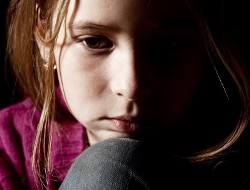Pets are often a part of the family, and for children they can be their best and most unconditional friend. As a home-based early childhood teacher/kaiako for Footsteps I am often asked for helpful hints for how to help little one’s through the grief of loosing a family pet. Here are some of the ways that I suggest you guide your children through this grief and change.
What is a child’s understanding of death?
The death of a pet may be the child’s first experience of death. In early childhood, understanding death and its permanency can vary depending on their age and comprehension level. When under three years of age, children will have very little understanding, and will simply know their pet is ‘gone’. From three to five years of age children have some understanding of death, but not its finality – they may believe that magic may bring a pet back, especially if similar themes have been in movies or books. They may think perhaps a vet could still give them medicine to make them come alive again.
From 6-8 years of age children are more likely to understand that death is permanent but find it difficult to understand why it has happened to their pet. There could be feelings of anger and a feeling of it being very unfair, as in their eyes, their pet was a ‘good pet’ so why did it have to die?
What to say to a child

Some children need to know exactly what death is. Explain that death is not sleeping. Let them know while your pet feels no pain now, they also can’t breathe, eat or play. While it sounds quite clinical children often need to know the basic facts at their own level.
Give your child a chance to say goodbye with cuddles and words of farewell. Take some photos before they go to the vet, as later, they will be helpful for your child in working through their feelings.
If there is an accidental death, you may choose to bury your pet in the back yard with a ceremony so there is a feeling of being able to say goodbye.
Sometimes pets go missing and after some time you know realistically they have passed away. This is difficult for children as there is no chance to say goodbye, and no body to bury. Recently our 11-year-old cat Doodles who had been very ill and had been going to the vet frequently went out one night and never returned.
We talked to our young six year old about how cats may know that it is their time to die when they are very sick and old, and that they go and find a special tree to go under and die. She would ask me every few days in the first fortnight “Mum, Doodles isn’t coming back is he”. “No”, I would answer, “he was very old and sick”. I would then talk about what a lucky cat he was when he was alive as he was given lots of love and cuddles. “He was your special cat”. As we couldn’t have a burial my daughter set up chairs in a circle in the back yard, put a stuffed toy black cat on the ground surrounded by flower petals and we all said goodbye.
What you say about what happens after you pet dies, and how you choose to farewell them, will of course depend on your own families cultural and religious beliefs.
What to avoid saying
- Don’t say your pet “has gone to sleep” or “been put to sleep” as young children can take things literally – it may make them fearful of going to sleep themselves, or cause them to worry that when you sleep you will die
- Don’t say the pet has gone to live on a farm, as it will not take away the grief that your child’s pet has gone and they will only feel betrayed when the truth comes out. Being vague about what has happened will just leave your child confused and anxious
- Saying the pet ran away only leaves your child hurt that their pet ‘left them’ and gives them false hope that they will return.
Working through feelings and grief after losing a pet

When we lost our cat ‘Doodles’ my daughter become interested in the Slinki Malinki storybooks that she hadn’t read for over a year, recognising that black Slinki Malinki looked like her cat. A stuffed black cat toy was also cuddled often and taken to bed for a few nights.
Talking about things allows children to make sense of what has happened and enables it to become real for them. My little girl told both her Nana and Grandma all about her ceremony, and anyone else who she came in contact with over the following weeks.
It is healthy for children to see that you are upset or missing your family pet too, so don’t feel you need to hide your emotions.
Focus on the good memories of your pet and be guided by your child as to how often they want to talk about it. You may find the
Books are a way that children can understand their own feelings through experiences in stories. Some titles to look for are:
- Goodbye Mog by Judith Kerr
- I Miss My Pet: A First Look at Death of a Pet by Pat Thomas
- The Sunshine Cat by Miriam Moss
- The Old Dog by Charlotte Zolotow
You can also ask your local library for some suggested children’s books.
At our house a few months on we still hear “I miss Doodles” every now and then, which is expected and is normal and healthy. I answer her with “of course you do darling, he was your precious cat”. Now a little more time has passed, the conversation has turned to how our other cat’s bowl “looks very lonely by itself in the kitchen”. A not so subtle hint! I take from this she is on to her next stage of grief – not wanting a cat to replace her old Doodles, but ready to have another cat to enjoy and love again.






